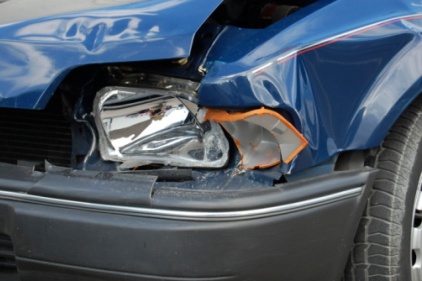States get report cards on highway safety
Crash fatalities up in 2012

 Progress in traffic safety is “at risk of being undone,” according to a safety group that has put together a 2013 Roadmap of State Highway Safety Laws, a report card grading all 50 states and the District of Columbia on their performance on 15 basic traffic safety laws.
Progress in traffic safety is “at risk of being undone,” according to a safety group that has put together a 2013 Roadmap of State Highway Safety Laws, a report card grading all 50 states and the District of Columbia on their performance on 15 basic traffic safety laws.
This year the report focuses on the new incentive grant programs created under the Moving Ahead for Progress in the 21st Century Act, MAP-21 (Pub. L. 112-141) to encourage state enactment of teen driver licensing laws, all-offender ignition interlock laws, distracted driving laws and occupant protection programs.
“The traffic safety progress we've made since 2005 is at risk of being undone,” said Jacqueline Gillan, president of Advocates for Highway and Auto Safety, coalition of consumer, health and safety organizations and insurance companies that work together to advance state and federal highway and vehicle safety laws, programs and policies.
“Several states have been moving backwards and most states are not moving at all to enact lifesaving laws. Last year only 10 state highway safety laws were enacted, in contrast to 16 laws passed in 2011 and 22 laws passed in 2010. Now is the time for states to act and get the ‘triple bonus’ of preventing deaths, saving taxpayer dollars, and reaping additional federal dollars available from the MAP-21 grant program.”
Biggest leap in traffic deaths since 1974
Preliminary National Highway Traffic Safety Administration (NHTSA) data show the largest jump in traffic fatalities since 1975, a 7.1 percent increase in crash deaths during the first nine months of 2012 compared to the first nine months of 2011. Every year about 33,000 people are killed and over 2 million more are injured. The federal government estimates that motor vehicle crashes cost society $230 billion every year, equivalent to a “crash tax” of more than $750 for every person.
“In addition to the loss of life and debilitating injuries, there are many other health impacts of traffic crashes, such as costs of medical care and lost work days and productivity,” said Dr. Adewale Troutman, President, American Public Health Association (APHA). “These ‘hidden’ health care costs of transportation-related injuries are at an unnecessary and unacceptable level. They are putting undue financial burdens on our families and on our state and federal budgets, and ultimately on taxpayers.”
Among the 15 highway safety laws Advocates evaluated in its 2013 report (available at www.saferoads.org) are seat belt, booster seat and motorcycle helmet measures, in addition to restrictions and requirements for teen drivers, all-driver texting bans and tougher impaired driving laws.
Best and worst states
In this year’s report, states were given one of three ratings based on how many of the 15 optimal laws they have: Green (Good); Yellow (Caution - state needs improvement); and Red (Danger - state falls dangerously behind). Placement in one of the three ratings was based solely on whether or not a state had adopted a law as defined in the report, and not on any evaluation of a state's highway safety education or enforcement programs.
In all, the best states are New York, District of Columbia, Illinois, Kansas, New Jersey, North Carolina, Oregon, Delaware, Georgia, Rhode Island and Washington. The states with the worst ratings are South Dakota, Mississippi, Arizona, Montana, Nebraska, Wyoming, Iowa, Florida, Missouri, New Hampshire, North Dakota, South Carolina and Texas.
New traffic safety laws
In 2012, 10 states enacted one of Advocates’ recommended highway safety laws for a total of 10 new laws. The new laws enacted in all state legislatures are:
- Booster Seats (children ages 4 through 7): Arizona;
- Graduated Driver Licensing (GDL) for teen drivers: Ohio, Michigan and Wisconsin (optimal cell phone restriction);
- Impaired Driving: Missouri, Virginia (ignition interlock devices for all offenders) and Mississippi (child endangerment);
- All-Driver Text Messaging Restriction: Alabama, Idaho and West Virginia;
- All-Rider Motorcycle Helmet Law: Michigan repealed its law and no state enacted one.
The 2013 report found that an additional 316 new laws need to be adopted in all states and D.C. to fully meet Advocates’ 15 legislative recommendations:
- 18 states still need an optimal primary enforcement seat belt law;
- 31 states still need an optimal all-rider motorcycle helmet law;
- 19 states still need an optimal booster seat law;
- No state meets all the criteria of Advocates’ recommended GDL program (178 laws still needed);
- 40 states and DC are missing one or more critical impaired driving laws (55 laws still needed); and,
- 15 states still need an all-driver text messaging restriction.
The 2013 Roadmap of State Highway Safety Laws can be found at www.saferoads.org.
Looking for a reprint of this article?
From high-res PDFs to custom plaques, order your copy today!





